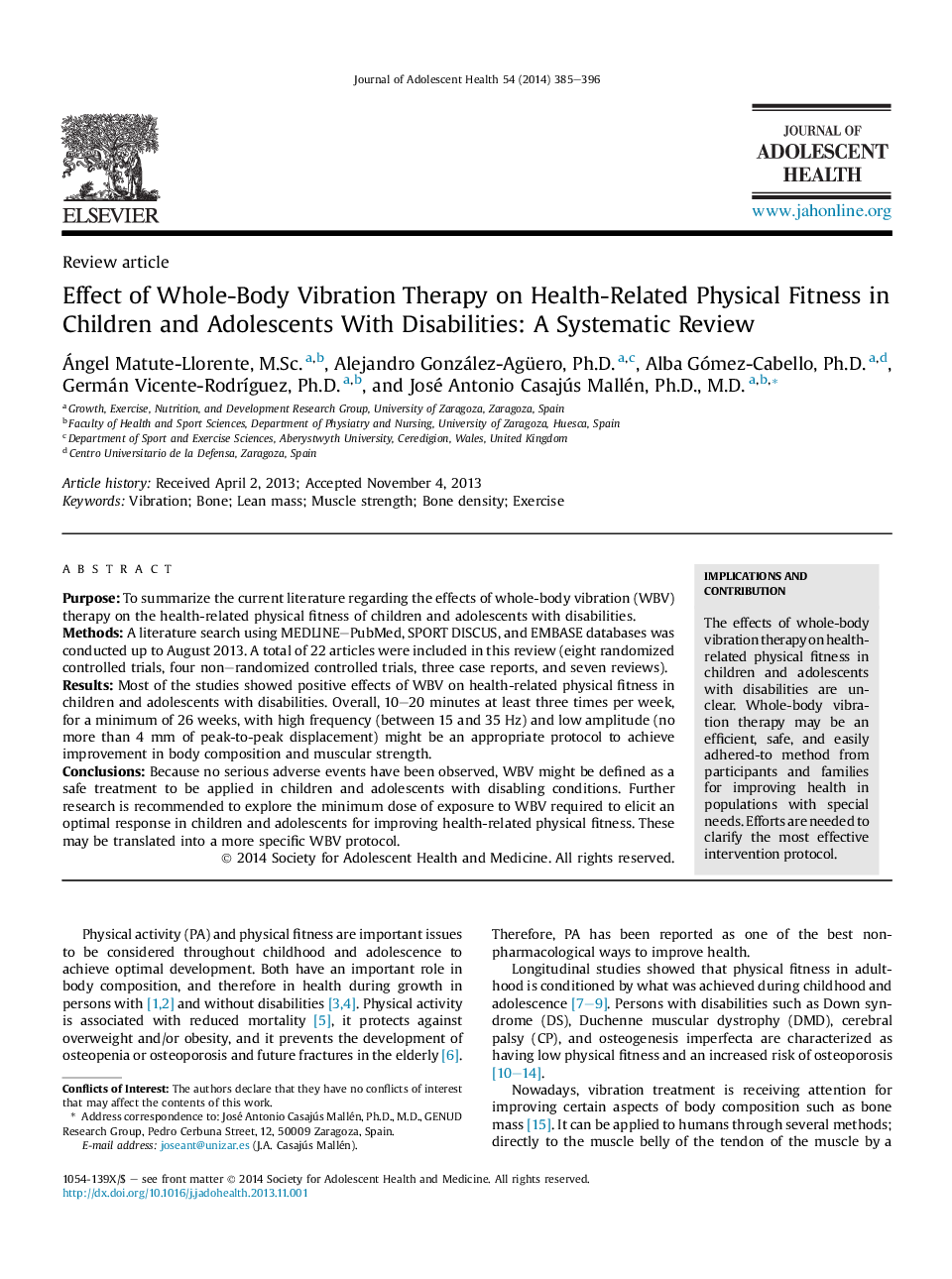| Article ID | Journal | Published Year | Pages | File Type |
|---|---|---|---|---|
| 1078827 | Journal of Adolescent Health | 2014 | 12 Pages |
PurposeTo summarize the current literature regarding the effects of whole-body vibration (WBV) therapy on the health-related physical fitness of children and adolescents with disabilities.MethodsA literature search using MEDLINE–PubMed, SPORT DISCUS, and EMBASE databases was conducted up to August 2013. A total of 22 articles were included in this review (eight randomized controlled trials, four non–randomized controlled trials, three case reports, and seven reviews).ResultsMost of the studies showed positive effects of WBV on health-related physical fitness in children and adolescents with disabilities. Overall, 10–20 minutes at least three times per week, for a minimum of 26 weeks, with high frequency (between 15 and 35 Hz) and low amplitude (no more than 4 mm of peak-to-peak displacement) might be an appropriate protocol to achieve improvement in body composition and muscular strength.ConclusionsBecause no serious adverse events have been observed, WBV might be defined as a safe treatment to be applied in children and adolescents with disabling conditions. Further research is recommended to explore the minimum dose of exposure to WBV required to elicit an optimal response in children and adolescents for improving health-related physical fitness. These may be translated into a more specific WBV protocol.
